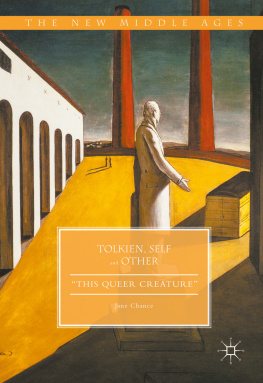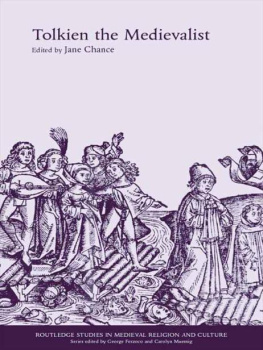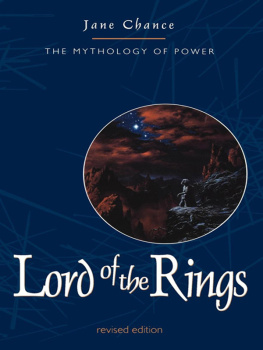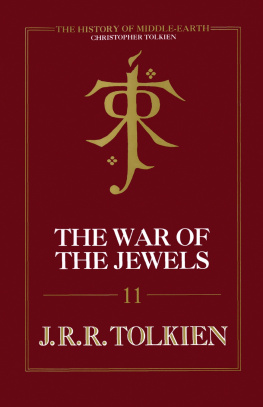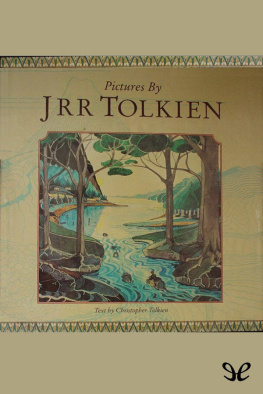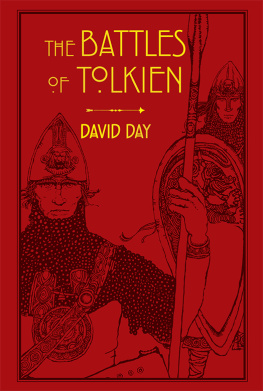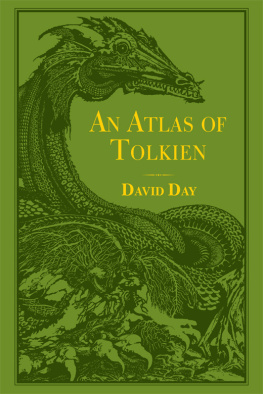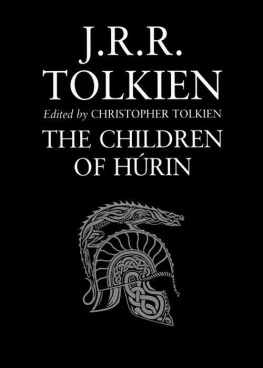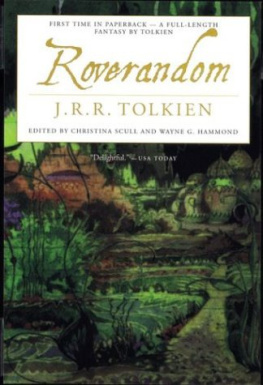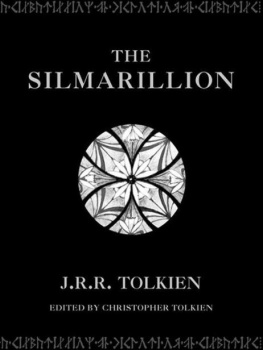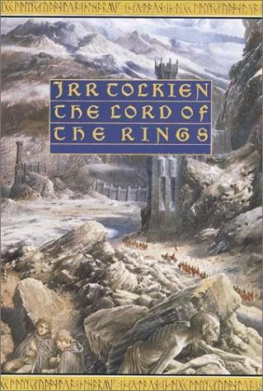1. Introduction: This Queer Creature
On a scrap of paper Tolkien scribbled an essay he originally titled A Hobby for the Home in which he confesses to A Secret Vice, as he later referred to it in a letter of 1967 and as his son Christopher retitled it. Someone was lecturing on army experiencesmap-reading or camp-hygiene (a few sentences down Tolkien explains that military arrangements prevented the two of them from meeting again, so the memory likely stems from an experience he had while in the army during World War I). All of a sudden this little man says, in a dreamy voiceand this entire recollection has a dream quality to itYes, I think I shall express the accusative by a prefix!
Surely this is fiction, or maybe it is Tolkien masquerading as the little manfor he loves this memorable remark. What is magnificent to him is that it reflects a personal pleasure, like his own for the creation of Sindarin and Quenya, the Elven languages of Middle-earth. He uses other metaphors to note about the little man that he proved close as an oyster (not unlike Tolkien himself, who is publicly secretive about his private fears and joys). Tolkien imagines this queer creature as inventing languages during wartime, someone who cheered and comforted himself in the tedium and squalors of training under canvas, but so that no one else would hear him or study those languages. Tolkien concludes without affect that the little man likely was blown to bits in the very moment of deciding upon some ravishing method of indicating the subjunctive.
Of course during his entire life Tolkien invented languages, for he describes children, apparently his nieces, making up a language (by using animal names) called Animalic, and also Nevbosh, or the New Nonsense, a play-language in which he participated. But he never said that he spoke NevboshI was older in secret vice (secret only because apparently bereft of the hope of communication or criticism), if not in years, than the Nevbosh originator. As an adult, Tolkien was apparently alone in his vice, as he was in many of his endeavors during his entire life.
Tolkiens essay, extant in only one manuscript and never published during his lifetime, reveals his desire to create languages as the chief joy in his life, an exemplar of how deeply personal was his commitment to his profession as scholar and to his creation of a fantastic world whose history, peoples, and languages felt like home to him. Allegedly, Tolkien wrote the essay, according to Christopher, a year or more ago after the Esperanto Congress meeting in Oxford in July 1930. Why Esperanto? This notion of a made-up language intrigued Tolkien, he avers, because it is necessary for uniting Europe before it is swallowed by non-Europe and because it was entirely made up by just one man who is not a philologist. This purpose leads him to his stealthy subject nothing less embarrassing than the unveiling in public of a secret vicethe inventing of languages. Notably, in the alter-ego he calls this queer creature he projects himself as abject and set apart from others, without any companion to speak to, while maintaining his persona as a mirror image who can only speak by writing to himself.
Why Tolkien regards this confession as embarrassing is unclear, but the lecture is marked throughout by his inimitable humor and personal references to memories of a strangera soldierlikely his own persona or a doppelganger. For that stranger, languages satisfy either the needs of a secret and persecuted society, or the queer instinct for pretending you belong to one
What Tolkien would like to do is to explain that, at this higher levelwhich involves the perfect construction of an art-languageone must construct at least in outline a mythology concomitant. This, he himself did, by creating the world in which his several languages are spoken, one with an individual flavor, to be achieved by weaving into it the threads of an individual mythology, individual while working within the scheme of natural human mythopoeia. This result apparently happens inevitably, for your language construction will breed a mythology.
What Tolkien says about such projection is key to understanding how he sees himself, and others: that is, as an allegory. In letter 163 to W.H. Auden, written on 7 June 1955, he confesses that In a larger sense, it is I suppose impossible to write any story that is not allegorical in proportion as it comes to life; since each of us is an allegory, embodying in a particular tale and clothed in the garments of time and place, universal truth and everlasting life (21213). If this was true for Tolkien, why was it true, and how did he allegorize himselfcover up himself in the clothing of fiction? This important statement, grounded in medieval platonic definitions of allegory, nevertheless suggests that every fantasy character invented by Tolkien in some way embodies its own personal moment in its creators mythos as its creator projects his own self, or story, into it at the time and place in the world in which he lives. Benjamin Saxton has noted in his discussion of authorship in Mikhail Bakhtin and Tolkien that For Tolkien, the act of narration becomes a metaphor for living in the world. Tolkiens characters in his narratives allow him to do that by means of allowing them dialogic freedom to express their individual difference. They are very often abjecta term associated with Freudian psychology and Kristevan feminist theory.
Certainly Tolkien himself was shy and abject all his life. I believe he viewed himself as Other. Slavoj iek, in Neighbors and Other Monsters, taxonomizes types of the Other.
First, there is the imaginary otherother people like me, my fellow human beings with whom I am engaged in the mirrorlike relationships of competition, mutual recognition, and so forth. Then, there is the symbolic big Otherthe substance of our social existence, the impersonal set of rules that coordinate our coexistence. Finally, there is the Other qua Real, the impossible Thing, the inhuman partner, the Other with whom no symmetrical dialogue, mediated by the symbolic Order, is possible The neighbor ( Nebenmensch ) as the Thing means that, beneath the neighbor as my semblant , my mirror image, there always lurks the unfathomable abyss of radical Otherness, of a monstrous Thing that cannot be gentrified.
Which must imply that in the neighbor is the monstrous Other, in whom I see myself. In respect to Tolkien, Benjamin Saxton, citing Gary Saul Morsons concept of sideshadowing, argues that Tolkien illustrates characters choices by creating a series of oppositional figures, or foils for one another: Hobbits Frodo and Gollum, wizards Gandalf and Saruman, kings Thoden and Denethor, and the men and brothers Faramir and Boromir: They also demonstrate that, for Tolkiens characters, the other is always, to some extent, me. The exemplar Saxton uses is Gandalf the White, who says I am Saruman as he should have been.
If this was true for Tolkien, why was it true, and how did he allegorize himselfcover up himself in the clothing of fiction? Tolkien is often most queer in his disruption of whatever conventions his world might have expected an Oxford medievalist to follow, which we essentialize as having been the most Tolkienian, as if his originality as a thinker and fantasy writer did not set him apart from his peers and as if it were always as valued as it is now. The multiplicity of selves may be normative in the modern age (I think of Hermann Hesses Steppenwolf and its image of the individual as a layered onion with many selvesa modernist image, if not exactly a queer one). Tolkien in his own narrative appears more and more postmodern in the fractured self he projects into fantasy through characters such as the everyhobbits Bilbo and Frodo, whom contemporary media pundits perceive as in love, often viewed queerly through a Jacksonian lens. Do we read into him our own postmodern queerness, or is it our own queerly medieval desire as other, to resist and disturb the normative?

